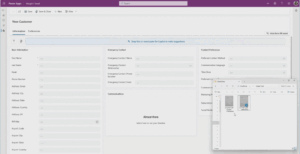I Evaluated Microsoft Copilot’s AI Coding Abilities in 2025, and It’s Impressively Enhanced

A Closer Look at Microsoft’s Copilot: Progress in AI Coding Assistance
The emergence of Artificial Intelligence (AI) has stimulated considerable excitement in various fields, especially programming. Initially, the hype around AI coding assistants like Microsoft’s Copilot outpaced their practical usefulness. However, recent tests reveal a significant evolution in its capabilities.
Copilot’s Early Performance
Initial Impressions
When Copilot was first evaluated in April 2024, it struggled immensely, failing to complete standard coding tasks satisfactorily. This led to skepticism about its effectiveness and utility in real-world programming scenarios.
Lackluster Results
In the initial tests, Copilot fell short, providing incorrect or incomplete solutions. For instance, when tasked with writing a WordPress plugin, it simply stored data without displaying it—essentially missing the point of the assignment. This initial failure prompted many developers to reconsider its use.
Significant Improvement Over Time
The Turnaround in 2025
Fast forward to April 2025, and there appears to be a remarkable turnaround. Copilot showcased noteworthy improvements that hint at a more reliable performance. Testing revealed a more competent tool that can tackle programming challenges with greater efficiency.
Testing Outcomes
Let’s delve into specific tasks Copilot was given during the evaluation:
1. Writing a WordPress Plugin
During this round, Copilot not only generated code that successfully displayed randomized lines but also exhibited some minor flaws, such as an extra blank line at the end. However, these were forgivable given that it completed the assignment as required. This marked a positive change from the prior year’s performance.
2. Rewriting a String Function
In another task focused on validating currency formats, Copilot fared quite well. While its earlier attempts allowed some flawed inputs, this time it effectively filtered out problematic data formats, ensuring that only valid entries passed through. This showcased its enhanced ability to handle complex data validation.
3. Debugging Code
A noteworthy improvement was observed when Copilot was tasked with finding bugs. In previous attempts, its advice was simplistic and unhelpful, often suggesting developers debug their own code without offering substantial insights. However, during this evaluation, Copilot promptly identified the issue and provided a clear solution, a sharp contrast to its earlier approach.
4. Writing a Script
Lastly, when challenged with creating a script involving various technical integrations, Copilot demonstrated its capability by effectively utilizing Keyboard Maestro and AppleScript to interact with web browsers as intended. Unlike previous attempts that produced incorrect results, this time it nailed the task, accurately fetching data from the specified context.
Performance Summary
Overall, the 2025 evaluation revealed a substantial transformation in Copilot’s abilities. From a tool that struggled to provide useful outputs, it evolved into a more proficient assistant able to handle a range of programming challenges effectively. This shift highlights the potential of AI tools in coding, raising the question of whether they can now be considered valuable assets in the developer’s toolkit.
As Copilot continues to improve, many developers are left to wonder if these advancements make it suitable for serious coding tasks or whether it still requires further refinement before being fully trusted. The ongoing evolution of AI in programming remains a topic worthy of attention as more users put it to the test in their coding projects.






